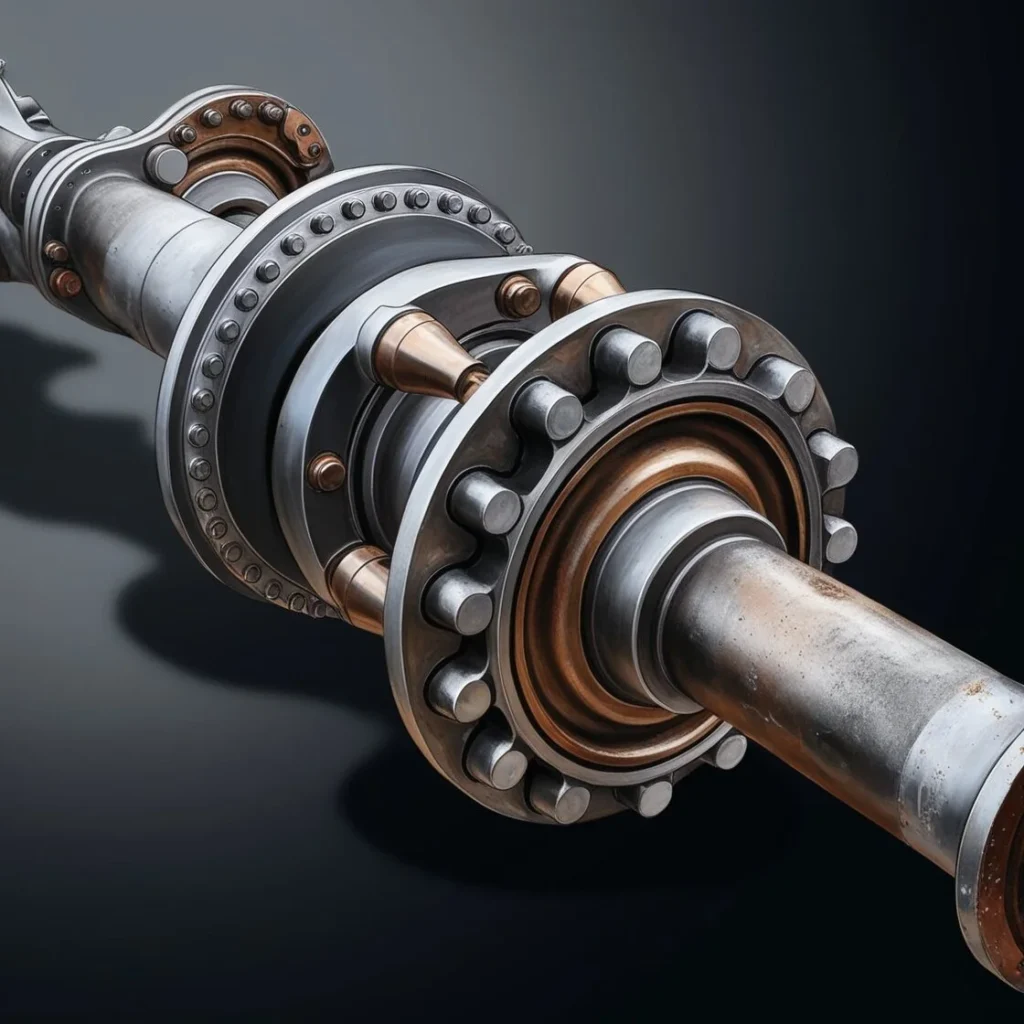What is the Crankshaft and How Important is it for the Engine?
The crankshaft or engine shaft is one of the most vital components in an internal combustion engine. Often overlooked by casual drivers, it plays an indispensable role in converting the energy generated by the engine’s combustion process into motion.
Understanding the function of the crankshaft is essential for appreciating how engines work, and recognizing its importance can help car owners maintain their vehicles better. In this article, we’ll explore what the crankshaft is, how it functions, why it’s critical for engine performance, and some common issues that can arise with crankshafts.

Index
What is the Crankshaft?
The engine shaft is a large, solid metal piece, typically made from forged steel or cast iron, designed to withstand the high levels of stress and pressure within the engine. Its primary role is to convert the up-and-down motion (known as reciprocating motion) of the pistons into rotational motion. This transformation of energy is what powers the vehicle’s wheels and enables it to move.
Each piston in the engine is connected to the crankshaft via a connecting rod. As the pistons move downward due to the combustion of fuel inside the engine’s cylinders, they push the connecting rods, which then rotate the crankshaft. The engine shaft, in turn, drives the transmission, which ultimately rotates the vehicle’s wheels.
This process allows the car to move forward or backward, depending on the transmission settings.
In addition to converting energy, the engine shaft plays a crucial role in balancing the engine. The crankshaft has several cranks and counterweights that offset the forces created by the moving pistons. These counterweights are critical in reducing vibrations and ensuring the smooth operation of the engine. Without this balance, the engine would be subject to severe vibration and could quickly wear out other internal components.
How Does the Crankshaft Work?
To better understand how the crankshaft functions, it’s helpful to first review how an engine works. In a typical four-stroke engine, the combustion process happens in four stages: intake, compression, combustion, and exhaust. The engine shaft is involved in each stage, although its most crucial role occurs during the combustion stage.
- Intake: The intake valves open, allowing air and fuel to enter the combustion chamber.
- Compression: The piston compresses the air-fuel mixture, preparing it for ignition.
- Combustion: A spark ignites the air-fuel mixture, causing a small explosion that forces the piston downward.
- Exhaust: The exhaust valves open, allowing the waste gases to escape as the piston moves back up.
During combustion, the force of the exploding air-fuel mixture pushes the pistons down. These pistons are attached to the engine shaft via the connecting rods. As the pistons move down, they push the connecting rods, which rotate the crankshaft. This rotational motion is transmitted to the transmission, which then drives the wheels of the car. In essence, the crankshaft is the link between the engine’s power and the wheels’ movement.
Another key component associated with the engine shaft is the camshaft. While the engine shaft converts linear motion into rotational motion, the camshaft controls the timing of the valves, ensuring they open and close at the correct intervals. A timing belt or chain connects the engine shaft to the camshaft, and the synchronization between these components is crucial for the smooth operation of the engine.
The Importance of the Crankshaft for Engine Performance
The crankshaft is indispensable for converting the engine’s power into motion. Without it, the energy generated by combustion would have no way of propelling the vehicle. It serves as the heart of the engine’s mechanical system, and its efficiency and balance directly affect the overall performance of the vehicle.
One of the most critical functions of the engine shaft is ensuring engine balance. The pistons in the engine create significant force as they move up and down, and the crankshaft’s counterweights offset these forces. If the engine shaft were out of balance, the engine would experience excessive vibration, which could lead to severe engine wear, lower performance, and even catastrophic failure over time.
Additionally, the engine shaft is responsible for distributing the power generated by combustion across all cylinders in an engine. In multi-cylinder engines (like V6 or V8 engines), the crankshaft must distribute power evenly to ensure smooth operation. If the crankshaft doesn’t do this effectively, issues like misfiring or uneven wear can occur.
Common Crankshaft Issues and Symptoms of Failure
Despite its durability, the engine shaft is subject to wear and can develop problems over time. Recognizing the symptoms of engine shaft failure is essential for preventing further engine damage.
- Excessive Engine Vibration: One of the most common signs of crankshaft problems is excessive vibration in the engine. As mentioned earlier, the crankshaft’s counterweights are designed to balance the forces created by the pistons. If the engine shaft becomes damaged or misaligned, these forces won’t be balanced properly, leading to strong vibrations that can be felt throughout the vehicle, especially at higher speeds or when idling.
- Knocking Sounds: Another symptom of a failing engine shaft is knocking or thumping noises coming from the engine. These sounds often indicate that the crankshaft’s bearings, which support the crankshaft and allow it to rotate smoothly, are worn or damaged. If left unchecked, bearing failure can cause severe damage to the crankshaft itself, as well as other engine components.
- Difficulty Starting the Engine: A malfunctioning crankshaft can make it difficult for the engine to start. Since the engine shaft plays such a crucial role in the combustion process, any issues with it can prevent the engine from turning over smoothly. You might experience prolonged cranking or an inability to start the vehicle at all.
- Oil Leaks Around the Engine: If you notice oil leaks near the front of the engine, it could be due to a worn engine shaft seal. These seals prevent oil from leaking out of the engine while the crankshaft rotates. Over time, they can wear out or become damaged, allowing oil to escape. Leaking oil can lead to low oil levels, which in turn can cause the engine to overheat or seize.
- Engine Overheating: A damaged engine shaft can also lead to engine overheating. The engine shaft is integral to the engine’s overall operation, and if it’s not functioning correctly, the engine may have to work harder than usual. This increased strain can cause the engine to overheat, leading to further damage and potentially engine failure.
- Decreased Engine Performance: A malfunctioning crankshaft can cause a noticeable drop in engine performance. You may experience a loss of power, poor acceleration, or difficulty maintaining speed. This is because the engine shaft is no longer converting the pistons’ motion into rotational energy efficiently.
Preventing Crankshaft Damage and Maintaining Engine Health
While engine shaft failure is serious, there are steps you can take to minimize the risk and keep your engine running smoothly.
Regular Oil Changes: The engine shaft relies on engine oil for lubrication. Without proper lubrication, the friction between the engine shaft and its bearings can cause significant wear. Regular oil changes ensure that the engine is properly lubricated and can significantly extend the lifespan of the crankshaft and its components.
Monitoring Engine Performance: Pay attention to how your engine sounds and feels. Unusual vibrations, knocking noises, or difficulty starting the engine are all signs that something may be wrong with the engine shaft. Addressing these issues early can prevent more extensive damage.
Crankshaft Balancing: In performance engines, or engines that are subjected to high stress (such as towing or racing), engine shaft balancing can be particularly important. Ensuring the engine shaft is balanced can reduce vibrations and improve overall engine efficiency.
Proper Installation: If you ever need to replace your engine shaft, ensuring it’s installed correctly is crucial. Misalignment during installation can cause significant damage to the engine and lead to premature failure.
Conclusion
The crankshaft is a fundamental component in an internal combustion engine, serving as the link between the energy generated by the engine and the wheels’ motion. Its ability to convert reciprocating motion into rotational energy makes it essential for vehicle movement. Moreover, the engine shaft plays a critical role in balancing the engine, reducing vibration, and distributing power evenly across the cylinders.
Understanding the symptoms of engine shaft failure—such as engine vibration, knocking noises, difficulty starting, and overheating—can help car owners catch problems early and avoid more costly repairs. Regular maintenance, including oil changes and engine inspections, will go a long way in preserving the crankshaft’s lifespan and ensuring the engine runs smoothly.
For any driver, taking care of the engine shaft means taking care of the engine. Regular check-ups and proactive care will keep your engine running at its best, and help avoid the expensive consequences of crankshaft failure.
